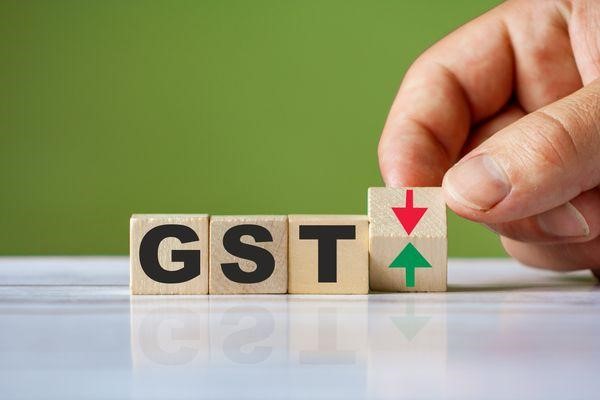GST Cancellation Rules And Norms That You Should Be Aware Of

GST or Goods and Services Tax has eliminated multiple taxes and has brought all goods and services under a single domestic indirect taxation law for the entire country. The regime mandates businesses over Rs. 20 lakhs in turnover to register for GST. This value is Rs. 10 lakh for states with special status. However, businesses can also opt out of the GST scheme and surrender their GST number. This is known as GST cancellation.
Continue reading to know more about who can file for GST cancellation, how to cancel GST, and more.
What is the Cancellation of GST Registration?
A GSTIN number is issued to the taxpayer at the time of GST registration. If the central tax authority or the taxpayer wishes to cancel this number, it is called GST cancellation. The tax officer takes care of cancellations in India. Businesspersons are not allowed to run their business after GST number cancellation. The Income-tax department will levy high penalties if they continue to do so. Once the GSTIN is cancelled, the business would not have to pay or charge GST. This generally indicates a winding down of business or a change in the business constitution.
Reasons for GST Cancellation
The Central Tax Authority or a business owner may choose to cancel GST registration for any of the following reasons:
The person is registered under one of the previous tax laws: Some businesses registered under the old tax regime are not liable for GST registration. For instance, the threshold limit for VAT was Rs. 10 lakhs, and that for GST is Rs. 40 lakhs. Thus, people registered under VAT are not liable for GST registration.
Discontinuation of Business: If a business stops operations, the owner can put in an application for cancellation of GST registration. It can also be cancelled in the following cases:
- If a business entity combines with another
- Partial or full transfer of business for any reason, including the death of the proprietor
- Change in business constitution
- If a registered person is no longer required to be under the GST scheme. This excludes those who have registered voluntarily under section 25 (3) of the CGST Act
- If a person registered under the GST composition scheme doesn’t file returns for 3 months in a row
- If the person doesn’t comply with GST laws and provisions, it leads to GST cancellation under the GST act
- If a registered person doesn’t file GST returns for 6 months continuously
- If a person registers their business voluntarily under section 25(3) of the CGST and doesn’t start a business within 6 months of the registration date
- If GST registration is obtained using fraud, misstatement or suppression of facts
Also Read
Who can Cancel GST Registration?
GST cancellation process in India can be initiated by the taxpayer or the tax officer. In case of the death of a taxpayer, the legal heirs can apply for cancellation. The tax officer needs to follow a standard procedure for cancellation of GST registration. This includes sending a show cause to the registered person. The receiver needs to answer the show cause within 7 working days from the date of the GST cancellation order. The failure to respond will lead to GST number cancellation.
Who can File for GST Registration Cancellation in India?
The following people can file for cancellation of GST registration in India:
- Existing taxpayers
- Migrated taxpayers with an approved enrolment application
- Migrated taxpayers who haven’t filled any form after completing the enrolment application
- Persons with a unique identification number or those registered as tax deductors/collectors cannot file for GST cancellation.
How to Cancel GST Registration?
Here are the ways through which you can cancel GST registration:
Procedure for GST cancellation by the Tax office
1. The tax office will send a show-cause notice to the taxpayer using form GST REG-17
2. The registered taxpayer must respond with a reason to stop the GST cancellation process. The response needs to be sent out within 7 days from the date of serving of notice.
3. If the tax officer is satisfied with the response, they will stop the GST registration cancellation process and issue an order using the form GST REG-20
Process for voluntary GST cancellation by the taxpayer
Procedures for cancellation of GST registration are different for migrated taxpayers and those who have filed tax invoices. GST portal allows GST registration cancellation for migrated taxpayers too. These are taxpayers who haven’t issued tax invoices after registration. Taxpayers who have issued invoices will have to fill out form GST REG-16. Here is the detailed GST cancellation process:
Step 1: Use the link www.gst.gov.in to login to the GST portal. Input your login details to access your GST account.
Step 2: Go to the top bar menu on your GST account dashboard. Click ‘service option’ and choose registration on the dropdown. In the next dropdown, select ‘Application for Cancellation of Registration’. The dashboard screen will now show three sections. They are basic details, cancellation details, and verification.
Step 3: Go to the ‘basic details’ section on your dashboard and fill in the requisite details. If you wish to receive future communication at the same address as the principal place of business, check the ‘same as above’ box and click on the ‘save and continue’ button.
Step 4: After saving the basic details, you will see the cancellation details section on the screen.
Step 5: Choose the reason for GST cancellation from 6 options in the dropdown. These reasons include the death of a sole proprietor, cessation of tax liability, PAN change because of change in the business constitution, business discontinuance, business transfer and others.
Step 6: You also need to fill out the following details in the cancellation form: GST cancellation reason, Desired date for GST registration cancellation, Stocks and inputs that attract tax, Details of the latest tax returns filed.
Step 7: Select electronic cash ledger or electronic credit ledger to indicate the stock value and tax liability
Step 8: You must enter the GSTIN of the transferee entity if the existing unit is transferred, merged, or demerged.
Step 9: After you fill in the cancellation form details, the verification section will be the next to appear on the screen. Enter the name of the authorised signatory and the place of declaration.
Step 10: In the following section, you will have to fill details of the authorised signatory. Submit the details after entering the relevant option.
Step 11: Choose between ‘submit to DSC’ and ‘submit to EVC’. It is mandatory for people with a company/LLP to upload the DSC. An OTP is generated after you submit the details in the verification section. Enter the OTP. You will receive an acknowledgement within 15 minutes.
In case of the death of the sole proprietor, the legal successor must file an application for cancellation of GST registration using Form GST REG-16. If the tax officer uses Suo moto for GST cancellation, the taxpayer can apply for revocation of GST cancellation using form GST REG-21 within 31 days from the issue of cancellation order.
Also Read
Information Needed for GST registration cancellation
You will need to provide the following information to cancel your GST registration:
- GSTIN of your business: The GSTIN is the unique identification number assigned to everyone enrolled under the GST scheme.
- Stock Details: Taxpayers must furnish the details of closing stock at the time of discontinuing business. The credit lying in stock needs to be paid along with the return.
- Details of pending penalties or tax liability: The taxpayer must provide all details of pending taxes and penalties to the tax authorities at the time of GST cancellation. They must clear these dues along with the return.
GST Registration Cancellation Forms
There are various forms for the cancellation of registration under GST in India. Each of them serves a different purpose. Below are the details of the forms and their purpose:
| Form | Purpose |
| FORM GST REG-16 | Voluntary cancellation by a registered user |
| FORM GST REG-17 | Show-cause notice by the tax officer |
| FORM GST REG-18 | Taxpayer’s response to the notice |
| FORM GST REG-19 | Dissolution order |
| FORM GST REG-20 | To stop the GST cancellation procedure |
| FORM GST REG-21 | Application for revocation of cancellation of GST registration |
| FORM GST REG-22 | Order for revocation of GST registration cancellation |
Documents Required for GST Registration Cancellation
Here is the list of documents required for GST cancellation:
- The following documents need to be furnished for GST registration cancellation:
- PAN Card of the authorised signatory
- Aadhar Card of the authorised signatory
- Details of last return
- Details of company authority, including when it was merged, demerged or transferred
The tax that the taxpayer must pay on stock
Filing Final GST Return (GST F8)
The GST department issues the final GST return through GST 8 Form. It contains all the relevant information from the date of GST registration to the date of deregistration. Businesses applying for cancellation of registration under GST must pay all outstanding returns and payments. They must also submit the completely filled GST F8 form within 1 month from the accounting period’s end.
The effective date of cancellation refers to the date when the GST registration is cancelled. This date varies based on the situation because some taxpayers also apply for revocation of GST cancellations.
Also Read
Revocation of GST Cancellation
Revocation of cancellation refers to undoing the cancellation of GST registration. It is applicable when the tax officer cancels the GST registration. Taxpayers must apply for revocation within 30 days from the cancellation date. To do this, they must submit an application to the tax authorities. The tax officer makes the final decision of accepting or rejecting the application for revocation.
Procedure for revocation of GST cancellation
1. If a tax officer has cancelled GST registration by Suo moto, the taxpayer can apply for revocation using form GST REG-21
2. The registered person must submit the application through the tax portal within 30 days of cancellation
3. The revocation is subject to the approval of the tax officer. The officer can revoke it using form GST REG-22 within 30 days of receiving the application
4. In case the tax officer is not satisfied with the revocation application, they can reject it using form GST REG-05. They then send a show-cause notice and the applicant needs to respond to it within 7 days. The response must include an explanation for why the application should not be rejected
5. Once the tax officer receives the response, they must decide within 30 days of the date of the notice. Form GST REG-24 needs to be used in such cases
Benefits of Voluntary GST Cancellation
If someone registered under the GST scheme cannot do any business after registration, they must proceed to surrender GST registration. If they stop filing returns, the registration will lapse and they will not be able to apply for new GST registration using that PAN. If they cancel it voluntarily, they can apply for fresh GST whenever they want.
Final Word
Taxpayers can apply for and track GST cancellation online here. They must ensure compliance after they receive registration. In case there is no commercial activity, it is better to apply for the cancellation of the GST registration at the earliest. Even if the tax officer cancels the registration, they must first apply for revocation of GST cancellation by paying any applicable penalties or GST cancellation fees. Once it is restored, they can cancel the GST or continue to file returns.
FAQs
Ans. Any business registered under the GST regime is assigned a unique number called the GSTIN. GST cancellation means not being under the GST scheme anymore. It involves cancelling the GSTIN without which the business doesn’t need to pay or charge taxes.
Ans. GST registration cancellation is done either by the tax office or voluntarily by the taxpayer. It is cancelled in either of the following cases:
Discontinuation of business
Business turnover is lower than the threshold
Business constitution changes
The taxpayer doesn’t file GST returns
When registration is acquired through fraud or willful misinformation
Business doesn’t comply with GST rules
GST registration is obtained voluntarily, but the business doesn’t begin operations within 6 months
Ans. Taxpayers can check the status of their GST cancellations through the website www.gst.gov.in. The service menu includes “Track application status”. Click on it and enter the ARN number in the next step. After the ARN search is complete, your application status will be displayed on the screen. It will be either approved or not approved. Subsequently, you will receive an email with your application status from the GST department.
Ans. When a tax officer from the central tax authority starts the GST registration cancellation process, they will send you a show-cause notice that you must respond to within 7 days of receipt. If you fail to do that, your GSTIN will be cancelled. Once cancelled, you must apply for revocation of cancellation within 30 days of the cancellation order.
Ans. You can voluntarily cancel your GST registration if you wish to discontinue your business or cannot sustain it after registration. You must also cancel it if your business constitution changes or your turnover is lower than the threshold.
Disclaimer
This article is solely for educational purposes. Navi doesn't take any responsibility for the information or claims made in the blog.
Read More on Income Tax Act

Customer’s Feedback
No comments found.What is Form 26QB for TDS? How to Download and Submit it?
While purchasing a property, buyers are liable to pay various taxes. The Finance Act, 2013 made TDS... Read More »PF Withdrawal Rules 2023 – Rules, Documents Required and Types
EPF/PF Withdrawal Employees’ Provident Fund (abbreviated as EPF) is a popular retirement sav... Read More »Stamp Duty and Property Registration Charges in Delhi 2023
It is compulsory for property buyers in the Capital to pay stamp duty in Delhi during property regi... Read More »Income Tax Return – Documents, Forms and How to File ITR Online AY 2023-24
In India, it is mandatory for all taxpayers who earn more than the basic tax exemption limit to fil... Read More »What is Section 80CCD – Deductions for National Pension Scheme and Atal Pension Yojana
The Income Tax Act provides a number of deductions and tax benefits to taxpayers, so they can strat... Read More »Tax on Dividend Income: Sources, Tax Rate and TDS on dividend income
What are Dividends? Companies may raise funds for running their operations by selling equity. Th... Read More »Section 112A of Income Tax Act: Taxation on Long-Term Capital Gains
What is Section 112A? Section 112A of the Income Tax Act was announced in Budget 2018 to replace... Read More »Section 206AB of Income Tax Act: Eligibility And TDS Rate
Section 206AB was introduced in the Finance Bill 2021 as a new provision pertaining to higher deduc... Read More »What is a Credit Note in GST – Example, Format and Steps
A GST Credit Note is mandatory for any GST-registered supplier of goods or services. As a supplier,... Read More »Exemptions and Deductions Under Section 10 of Income Tax Act
What Is Section 10 of the Income Tax Act? Section 10 of the Income Tax Act, 1961 provides tax-sa... Read More »Section 57 of the Income-tax Act – Income from Other Sources
It is quite likely that many entities - individuals as well as businesses - have multiple sources o... Read More »What is Dearness Allowance? – Types, Calculation, and Current Rate
What is Dearness Allowance? Dearness Allowance Meaning - Dearness Allowance (DA) is an allowance... Read More »Top 10 Chit Fund Schemes in India in 2023
Chit funds are one of the most popular return-generating saving schemes in India. It is a financial... Read More »10 Best Gold ETFs in India to Invest in April 2023
Gold ETFs or Gold Exchange Traded Funds are passively managed funds that track the price of physica... Read More »10 Best Demat Accounts in India for Beginners in 2023
Creation of Demat accounts revolutionised the way trades were conducted at the stock exchanges. It... Read More »20 Best Index Funds to Invest in India in April 2023
What is an Index Fund? An index fund is a type of mutual fund or exchange-traded fund (ETF) that... Read More »Best Arbitrage Mutual Funds to Invest in India in April 2023
Arbitrage funds are hybrid mutual fund schemes that aim to make low-risk profits by buying and sell... Read More »10 Best SIP Plans in India to Invest in April 2023
What is SIP? SIP or Systematic Investment Plan is a method of investing a fixed amount in ... Read More »10 Best Corporate Bond Funds in India to Invest in April 2023
Corporate bond funds are debt funds that invest at least 80% of the investment corpus in companies ... Read More »10 Best Bank for Savings Account in India [Highest Interest Rate 2023]
Savings account is a type of financial instrument offered by several banks. It lets you safely depo... Read More »




































